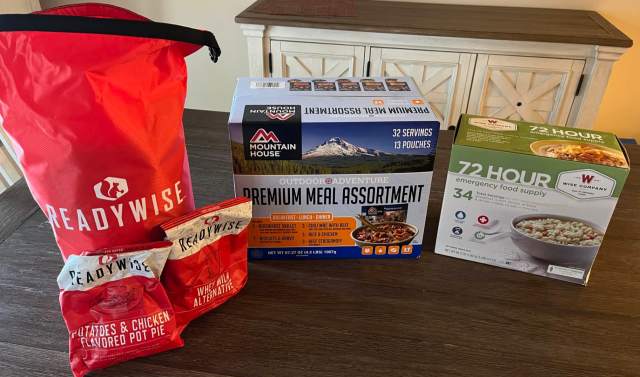No, I’m not a “prepper.” I was a Boy Scout in my youth, and a leader as an adult, and still hold to the “be prepared” motto. As a matter of fact, one supervisor in my later career said I was one of the most prepared staff he every had. I always had a tool–or a skill–handy to resolve a problem.
In those days, I lived on the west side of the Cascade mountains near the Seattle area. Threats we might face included earthquakes (yeah, we had one in 2001), floods, tsunamis, social unrest, and volcanoes. Now, we have weather, possible earthquakes, and wildfires.
A few years ago, we had a massive power outage here. In November. Depending on where you were in the area, it lasted for weeks. Then there have been huge fires. In 1987, we had the Hangman Fires. In 2020, we had the Babb-Malden fire. Things happen, and often without much warning.
Do you have what you need in an emergency or event like those above? What would you need? How do you protect you, your loved ones, your property?
Get What You Need
About 20 years ago, I attended a session hosted by the local Red Cross about being prepared and what might be needed. That’s where I got the backpack in the photo above. It contained a lot of things specifically for emergencies. Space blankets for warmth, food, water, ponchos to keep you dry, waterproof matches, flint and steel, first aid kit, and some other things. The photo below shows the current contents of the emergency pack.

There’s actually two first aid kits, hand/pocket warmers, two radios–one solar powered, gloves, light sticks. On the right side, next to the gloves, there is a tool. This tool is critical for home owners who have natural gas service. It is used to turn off the meter on the side of the house. Next to that is a wrecking bar (still wrapped in plastic) for opening things or moving wreckage. Some rope, upper middle. Batteries, large ones for flashlights, small ones (AA or AAA) for the radios or other items.
The little yellow radio came in handy in 2004-5 when the Seattle area was hit with a huge ice storm that knocked out power and cell service. It picks up AM or FM and holds two AA batteries for backup, can run on the solar panel, or you can crank the handle to keep it working.
Food
The food and water that came with the original kit are no longer here. The food expired a couple years later, as did the water pouches. That has to be supplemented and rotated as needed. below is a photo of some options for food.

Food like the above is freeze-dried. It will store in a dry location for up to 25 years. You can access these kinds of packs at local retailers, REI, or Costco. You could also check out Patriot Supply. But, be careful to do the math. 32 servings will feed one person for about 10 days, assuming a 2000 calorie per day diet. Except the meals are in pouches measured for four servings. So, for example, the Mountain House pack will feed four people three meals a day for almost three days. Some of the packs include powdered whey milk to go with the breakfasts.
Now, water. All the freeze-dried meals require water, and if you want the meals warm or hot, you need some kind of stove. I keep a butane backpack stove handy (it is in the kit I take on the motorcycle). It’s light and simple and a can of butane lasts for quite a while if you are careful.
Water
But, water. The Mayo Clinic recommends about 12 (women) to 16 (men) cups of water per day, that’s 6-7 standard 16-ounce bottles. Add how much you need for the meals, and that can tell you how many packs of bottled water to keep on hand. Unfortunately, this gets pretty cumbersome if you must “bug out” with all that gear, food, and water and only have a backpack.
In the event an emergency requires that you leave your home, plan how you will pack all this into a vehicle quickly and have what you and yours will need for the time you will be away. You might even practice a bug out, including turning off the gas service. If leaving with just the backpack(s), figure out how much water you will need and can carry.
The recent fire in Boulder, Colorado brings a lot of this kind of preparedness to the fore. Often, there isn’t a lot of time or warning when an emergency or a disaster happens. Being prepared can make all the difference in keeping you and yours safe, fed, and healthy.
Of course, be aware of the clothing you will need for the season. And, sturdy shoes are better than flip-flops for survival. Make that part of your planning.
Thank you for your patience and understanding. I know I’ve been a bit of a slacker on the blog lately. Been a busy grandpa. Honest, this post has nothing to do with me reading a lot of end-times, disaster novels lately. I’m looking at you, Jamie Lee Grey.
Keep writing!


